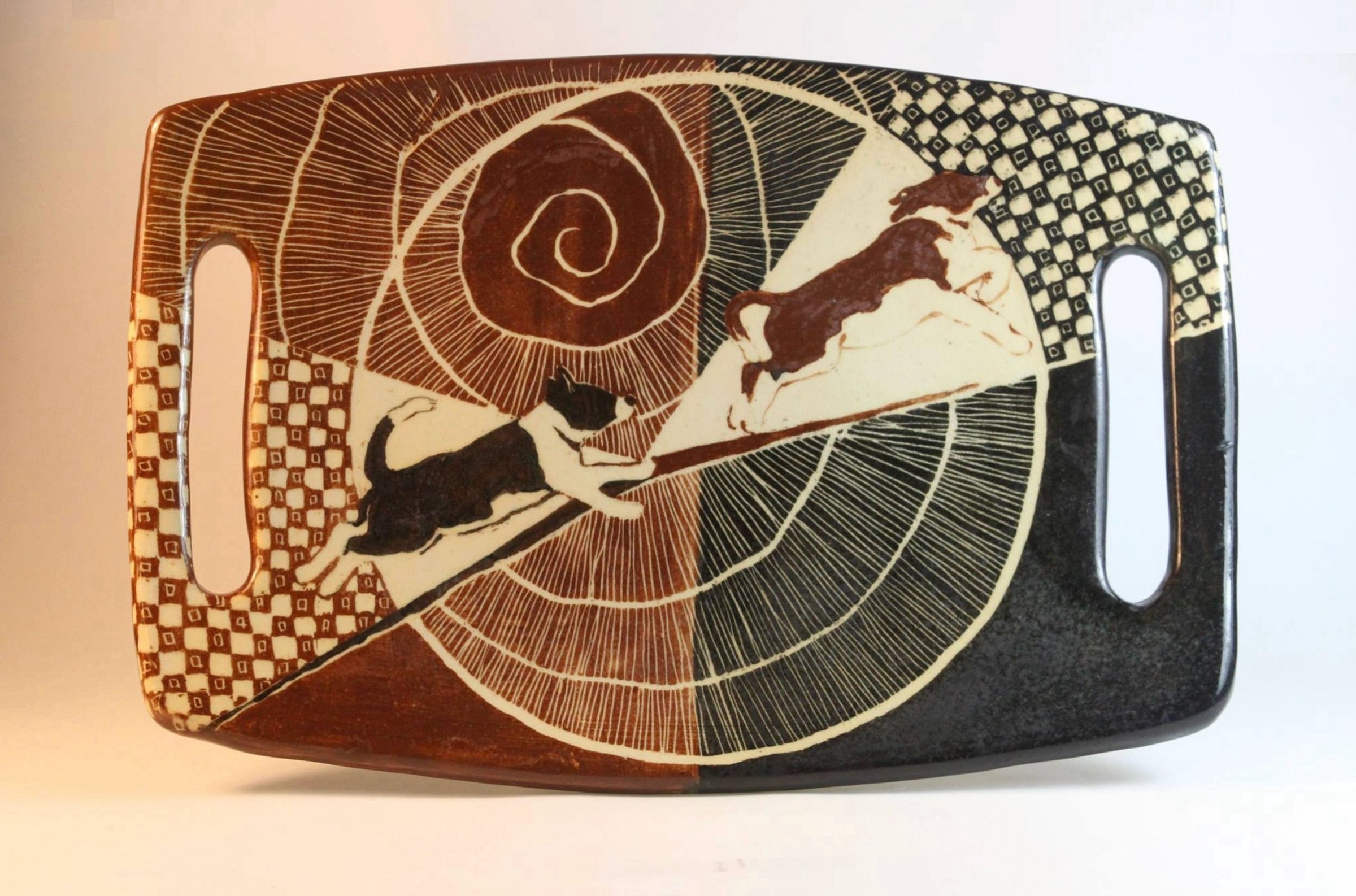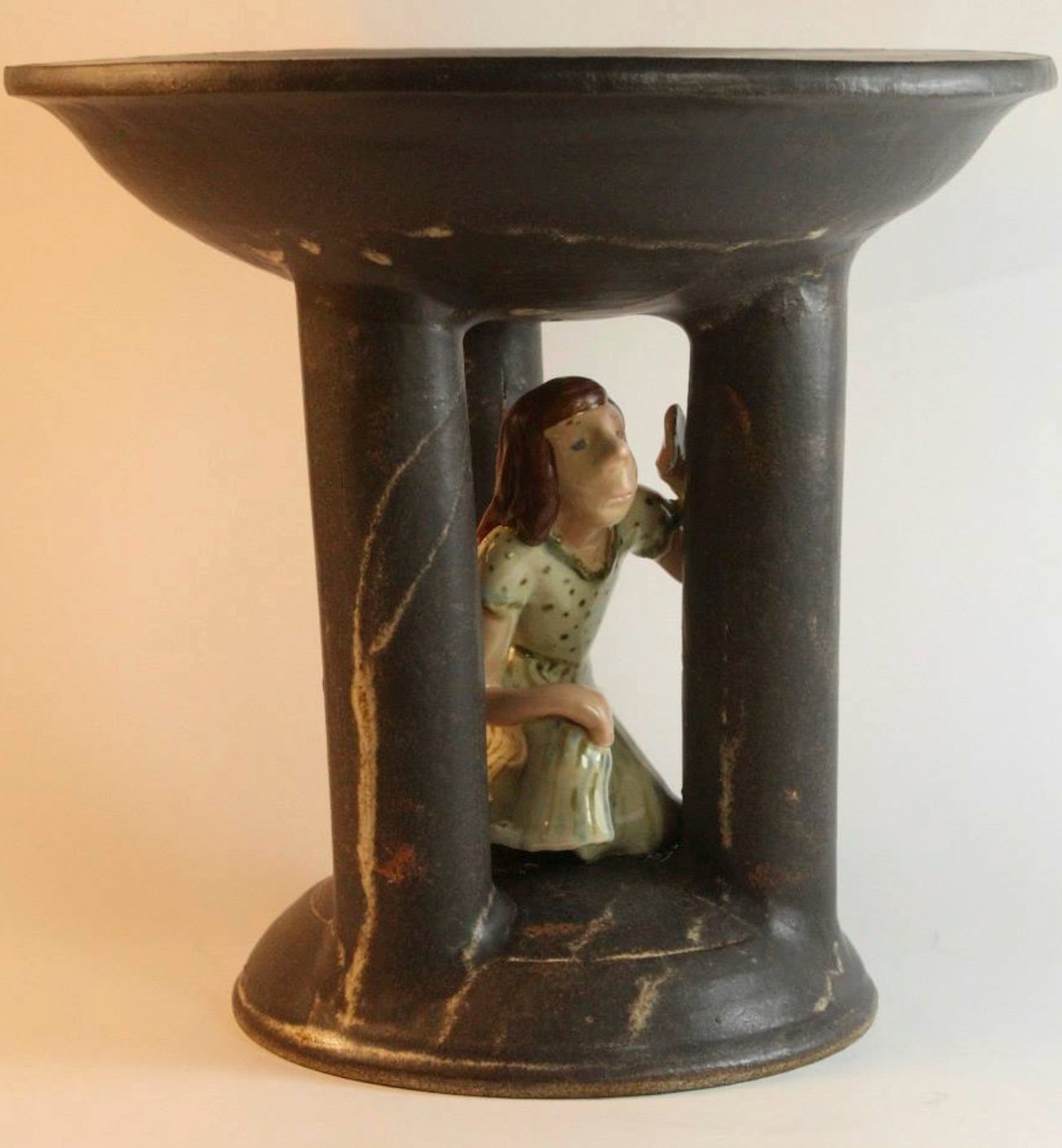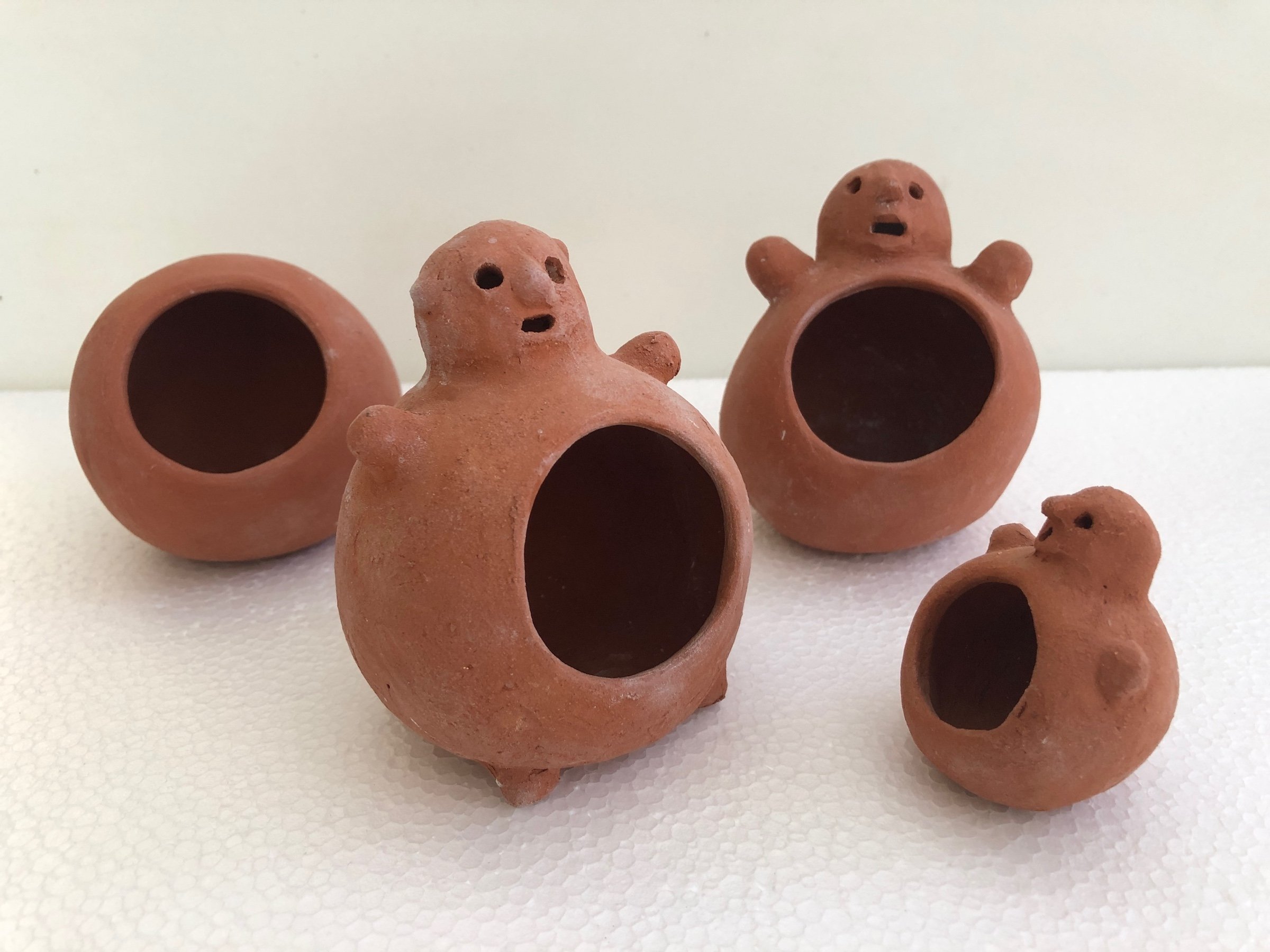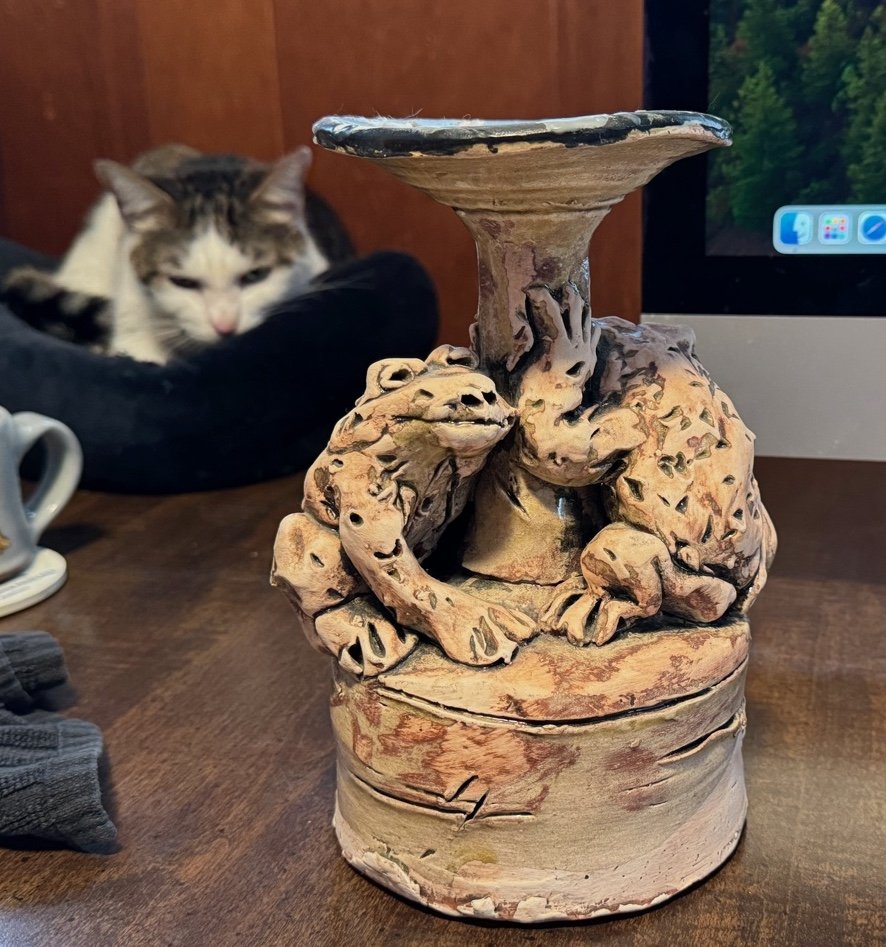Interview with artist Celia Storey
Celia Storey is a ceramics artist living and working in Little Rock. Her playful and often mischievous creations are clever and always fun. More of Celia’s work can be found at Art Group Gallery in Little Rock and at her website.
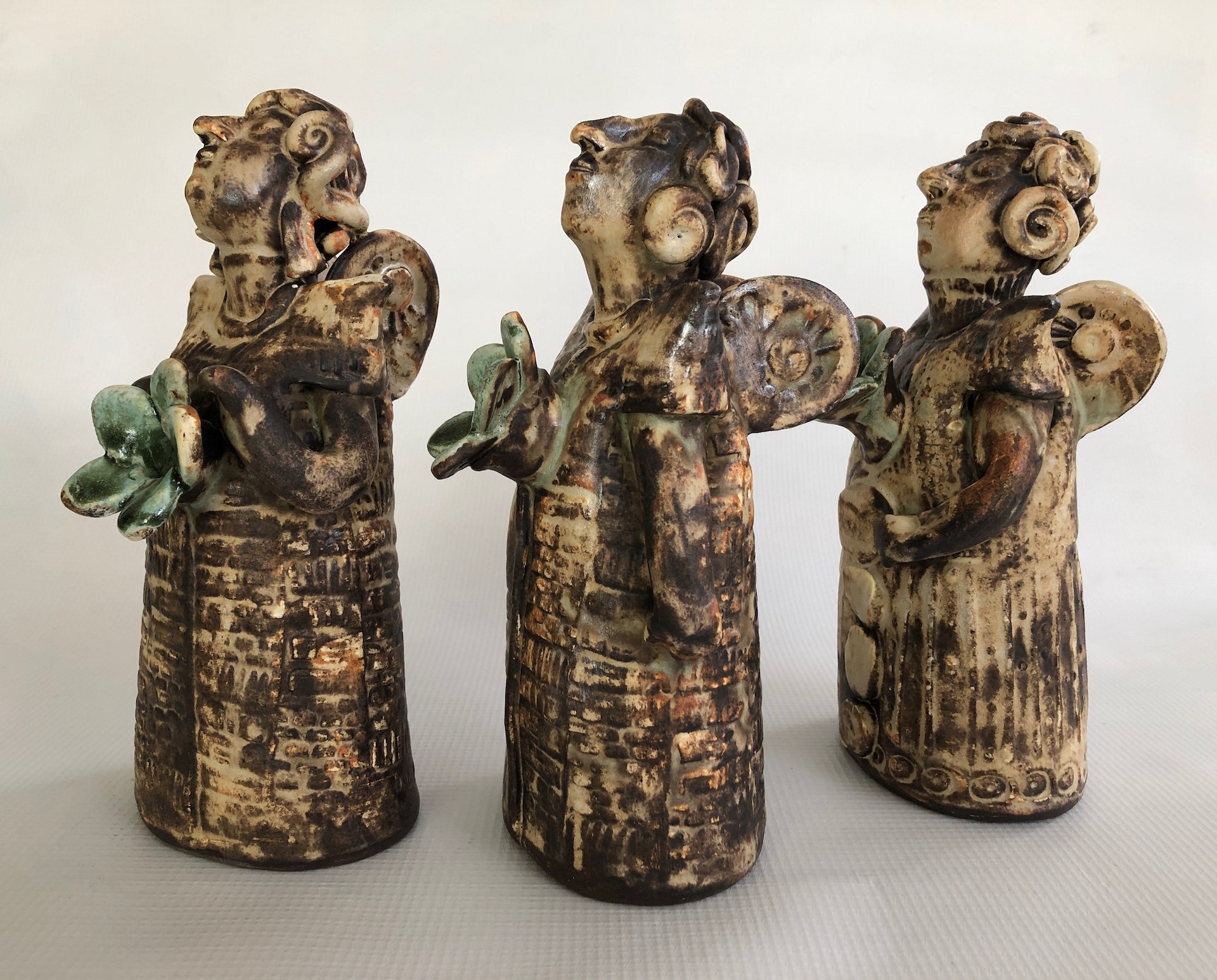

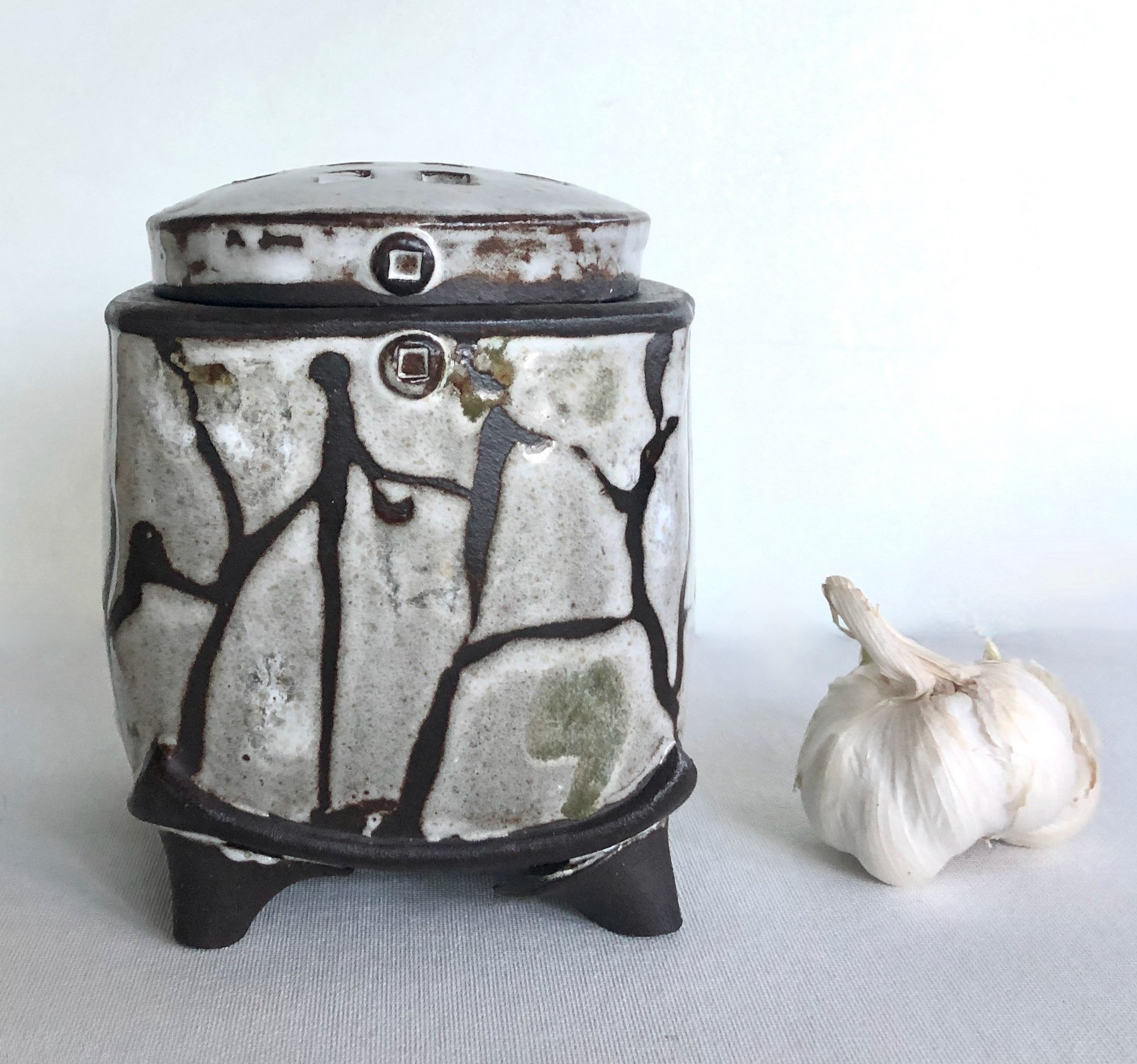
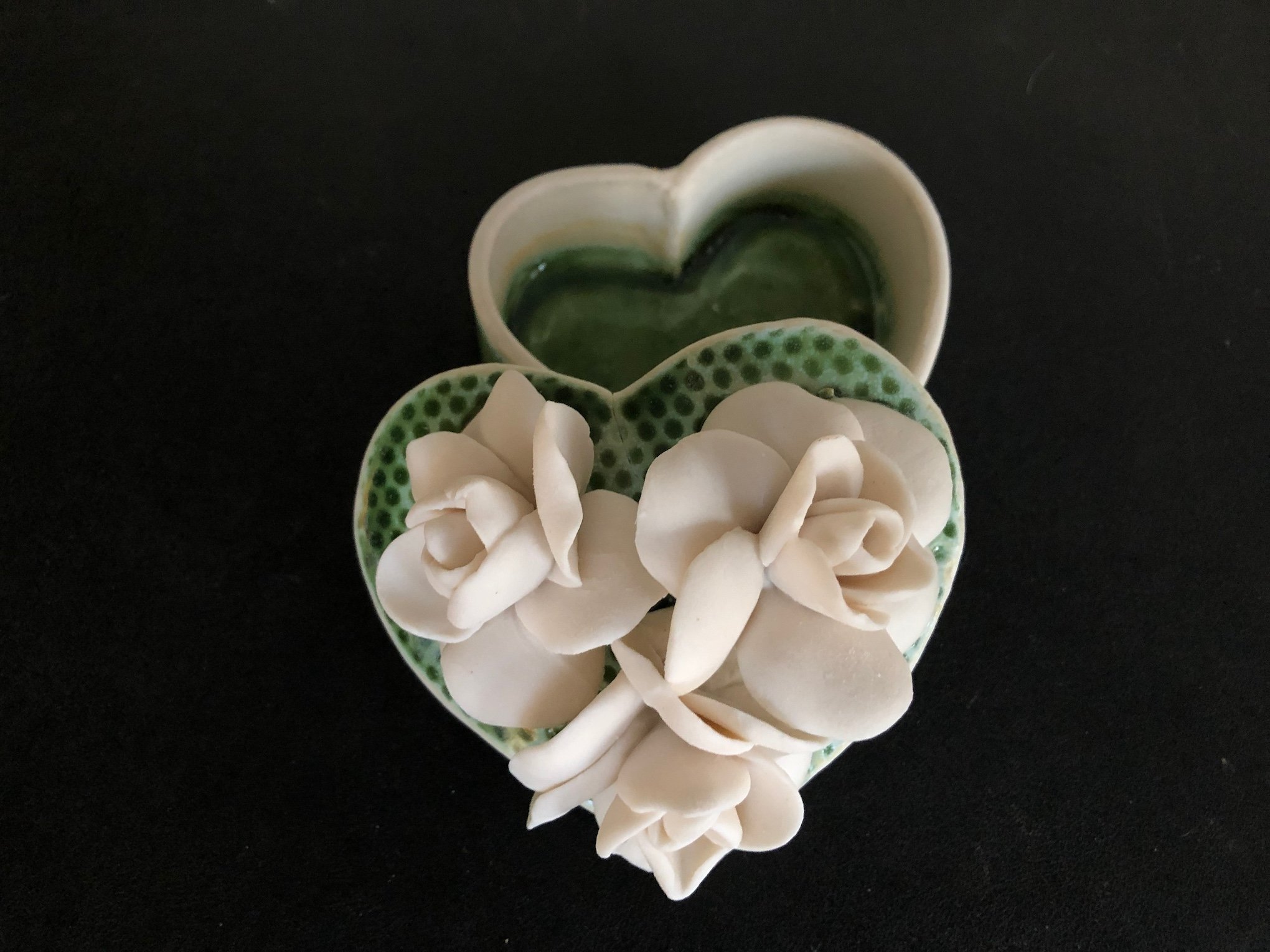
AAS: Celia, are you originally from Little Rock?
CS: For real I am a Little Rock Arkansan and a product of the Sliver by the River, but my childhood happened elsewhere. I was one of the last babies born at Norfolk Naval Station in Virginia, where my father was based at the time. Julius A. Loyall had a big career in the Navy, ending up in the Pentagon directing communications for the Joint Chiefs of Staff. His 5-decade career included two wars. He was captain of the USS Rowan and USS Pocono, and from 1960-61 the USS Little Rock. Not bad for a kid from Joiner, Arkansas, who had to drop out of high school when his father died in 1922.
Dad retired from the Navy when I was six and dragged our family to Texas. We endured a year of suburban Dallas while he saved the world by selling the best lightbulbs for human health. Later in Crystal City he had a Firestone store, a tiny farm, and ran the Chamber of Commerce. My mom, Julia Loyall, taught migrant workers in the public elementary. Jose Angel Gutierrez, a founder of La Raza Unida, was a guest in our home. Then somebody poisoned our dog, and Dad and an employee were jumped in an alley by white thugs. His employee was stabbed. This all happened a few years before the 1969 school walkout, which we missed because not long after the attack, Dad joined the War on Poverty and moved us to Bay City, Texas.
He was the Office of Economic Opportunity administrator there, and Mom taught in a segregated Black school that was desegregated during her second year. Dad also was a newspaper columnist and a country-western DJ, at KIOX Radio Bay City (“Cow X”). When I was in 9th grade, we moved to Sherwood, Arkansas.
AAS: When do you think you first discovered your love of art and of creating?
CS: Mom taught me to draw. She attended Rhode Island School of Design before meeting my dad, and even though she dropped out for a disastrous first marriage, she talked art with me as though she was talking shop. She had a fine, analytical mind.
I learned to recognize clay during dirt clod fights with my brother and his buddies. But I didn’t know its potential until Sister Mary Corlita Bonnarens taught us a section on sculpture at Little Rock’s Mount St. Mary Academy. For a stressed-out high schooler taking all the hard subjects, sending poems to the North Little Rock Times, and pretending to be an intellectual, art class was a refuge. I still dream about the basement hallway to class.
AAS: You’ve worked for decades as a journalist and copy editor. Was that something you set out to do?
CS: I just retired December 31 after four discontinuous decades with the Arkansas Democrat-Gazette, and it’s been a huge letting-go. I wanted to be a reporter before I could read. Blame the comic Brenda Starr, Reporter, and Brenda’s fabulous red hair. I’ve been thinking about how random that is a lot lately. But of course, my Dad’s journalism influenced me. He always had newspaper columns or public affairs shows on little radio stations. When I was in eighth grade, he talked the Bay City Tribune into giving me a double truck spread about Girl Scout camp. My ego lived on that for years. It’s ludicrous how I preached at the other newspaper club students at Mount St. Mary. You know, human brains don’t actually have all of their gray matter in high school.
At the University of Dallas, I studied English Lit. Dr. Louise Cowan urged me to go on to grad school, become that academic intellectual. But I had struggled so with writer’s block that I felt like a big fake. I left UD at top speed, afraid to look back. I tried going door to door for a group that advocated for tenants’ rights and the metric system for about three weeks, and I tried selling ads for KMJX radio for three days. Dad didn’t like my self-doubt, so he arranged lunch with Arkansas political activist Brownie Ledbetter, who told me to aim high. My father’s friend Mara Leverett, then with the Arkansas Times, got me an interview at the Arkansas Democrat. The rest was on-the-job training.
“Clay is just mud, so the stakes for experimenting with shapes and my reasons for making those shapes are low, really low. Until it’s fired, you get infinite do-overs. That lets me play.”
AAS: Your ceramic pieces have a delightful playfulness to them like in Cat Girl Predicament. Tell me about that piece in particular and what it is about working with clay that brings out your playfulness.
Cat Girl Predicament, ceramic stoneware, ceramic glazes, 10” x 7” x 7”
CS: I used to make fancy handles for lids and thought that was so special. A workshop presenter told me my lids were just blobs, lacking “structure.” And that the inside of a pot matters as much as the outside does to the physical experience of using it. We’ve all picked up a cozy-looking craft mug only to dislike its weight, right?
To improve myself, I began trying to treat my lids and pots as separate, collaborating structures. I wanted the lid to stand on its own while completing the profile of the pot. That cat girl literally stands on her own. And she is reversible. You can put the lid on the pot with her head up or with her legs up. She complements the outside and also the inside. That’s clever, but more important, to me, is the idea that she’s trapped in the transition from the inside to the outside of the pot‚ until the end of time.
I can admit that I didn’t really think up the idea. It just dawned upon me while I was goofing around, trying to make cooler lids. Clay is just mud, so the stakes for experimenting with shapes and my reasons for making those shapes are low, really low. Until it’s fired, you get infinite do-overs. That lets me play.
AAS: Hunted is another example of that playfulness, and it has a wonderful glaze. Do these forms and characters and settings just pop into your head as you begin to work with the clay?
Hunted Candlestick, ceramic stoneware and ceramic glazes, 13” x 6” x 6”
CS: I get ideas right and left. Ideas are so easy. Execution, that’s hard. Hunted came out of a very productive time after Ron Meyers gave a workshop at the then Arkansas Arts Center. That hilarious man demonstrated how confident gestures can harmonize and unite squat, even messy looking parts. He showed us his visual vocabulary, the dyspeptic looking frogs, the sloe-eyed femme fatale. He talked about how his methods reflect his blue-collar ethics and his imagery his personal life.
Let’s say the subject is “candlestick.” Ron applies his gestural marks and some frogs to orange riverbed clay, which looks kinda low-class. He takes the orange edge off with a dirty white slip. When he’s done, he’s got a candlestick that says, “I came from a sexy swamp.” I wanted a candlestick that says, “I came from a storybook.” My determined little hunter dude thinks he is up to the task of bagging a Beowulf. But look how sweetly worried the monster is. The hero is stalking a monster that isn’t a monster. He’s also too small to win.
AAS: Where do you do your firing?
CS: I fire most of my work in my home studio using an electric kiln. I use Cone 6 porcelain or stoneware clay, and my work is usually microwave safe and holds water. I mix up my glazes from raw chemicals using recipes from the community of potters as well as recipes I dope out myself through trial and error. But I don’t have a soda kiln, and I like soda-fired porcelain. Luckily, craft schools have community kilns like the one at the Windgate School at AMFA. We had access to gas and soda kilns during the 14 years I taught hand building at the Arkansas Arts Center, and I’ve missed that. Zach Wollert at AMFA is reviving soda for the new school.
AAS: One of your larger hand-built pieces is Umbrella Stand. I think it is terrific. Tell me about it.
Umbrella Stand, ceramic stoneware, ceramic glazes and JB Weld, 21.5” x 10” x 10”
CS: That gray-green glaze is matte but smooth as butter. I modified a popular chameleon glaze recipe while trying for a lighter green. The building evolved from an earlier building I’d made for Tabriz, a biannual Arts Center fundraiser. I fired that Tabriz piece to cone 10 in the old Alpine gas kiln that Angela Cummings taught me how to use. The Tabriz pot was the physical set for a game in which players decide whether or not to shove CEOs out a high window. I filled it up with an early version of my little people. There was this national conversation demonizing CEOs. I don’t like that our culture values the intellectual labor of financiers more than the actual labor of schoolteachers, but it’s just wrong to judge strangers by their occupations.
Anyway, the game was a hit. So, when I got my home kiln, the umbrella stand was a first project. I used my then-favorite clay, a fine-grained white stoneware not suited to such a large construction. Wow, did that clay crack. The glaze result was great though, and the Pinkies suggested what I wanted them to suggest. Dark-colored epoxy made a virtue of my failure. To me, residential buildings in art represent the psyche. Those Pinkies on the ledges are never, ever going to jump, but it is a desperate, lonely umbrella stand.
AAS: I have to ask you about Screaming Princesses Saltshakers. They must be fun to make, and do you have a collection for yourself?
Screaming Princesses Salt Shakers, 5” x 3” x 3”
CS: Those bratty little Karens! People like to interpret them as singing, which is fine, I get it, I was raised by the New Critics: the thing means what it means apart from my intention. The shakers are wheel-thrown, tedious and tricky to make. They remind me of specific difficult women I had to be very, very nice to. I made little turrets for a lot them to stand atop and yell about their thwarted entitlement. The turrets were pepper shakers.
I kept my first three for years because a workshop presenter said not to sell our best stuff. But after cleaning out two dead people’s houses, I’m wary of objects. Objects might be conspiring against me, trying to bury me in vanity. I keep very few of my pots on purpose. A bunch are hanging around me only because they haven’t sold.
AAS: I guess one of the first pieces I saw of yours was We Took Our Masks Off at the Libraries at Gallery Square. It is at first a fun and whimsical piece but upon more careful inspection it is more poignant. Is there a story behind it and those characters?
CS: I made that while wearing a mask in the Galleries during one of the early library events after public gatherings resumed. I was thinking about what we had gained by being allowed to mingle again, but also what we’d lost in the pandemic.
By the way, I was bereft when CALS closed that gallery. My self-confidence has curdled over the five years since Mom and my husband died, and I couldn’t teach for AMFA because I don’t sign nondisclosure agreements, so I lost my students, too. But I still had Shannon and Debra at the Galleries. Until–
Luckily, I face-planted into love with an old classmate from college. He’s a truthful friend, and this has been a magical time. But he lives in Texas, and we have to travel a lot. Maybe I should dump that clay mess in my basement, I thought. Maybe that phase is done.
So, I was not making much when Lauren Bellomy and Michelle Gunter Moore remembered me last year. Lauren invited me up to Fayetteville for the Arkansas Pottery Festival, so I had to make new work, fast. And then Michelle and her partners in Art Group Gallery in Little Rock asked me to do a popup show in November. These supportive, nurturing, and accomplished pros gave me a reason to clean my studio floor again.
My Pinky trays … to me, they are about how we all live in under-appreciated interdependence. The very first of them, 16 years ago, came from anger. I was listening to posturing partisans rant on the radio about how they had pulled themselves up by their bootstraps and how the interstates and public schools and all other communitarian institutions had nothing to do with their personal magnificence. And I thought, “You guys are drunk.”
I built a slab bowl and set a ring of little drunks teetering around it, not looking at each other and unaware that they were held up, each one, by the others. My first Pinkies were just idiots, but I feel more for them now. I hope they inspire empathy.
We Took Our Masks Off, ceramic stoneware, ceramic glazes, 8” x 8” x 15”
AAS: I know that you have several artistic talents. Tell me about your stop motion videos. Use Some Soap is just delightful and features Pinky.
Pinky Returning to the Earth, clay and Epsom salts
CS: I imagine and sometimes dream about my pots moving and talking. Years ago, a niece who was then in junior high showed me a stop-motion video she’d made about “The Vile Banana Slug,” using bananas. She had a phone app, Stop Motion. As soon as I got a smartphone, I downloaded that app, and Pinky flickered into life.
He was already doing amateurish comic videos for me in my pottery world when the newspaper asked reporters to make videos. I didn’t do field reporting enough to make these videos, so I put Pinky to work demonstrating the Master Class exercises. He saved me from having to learn to shoot professional interview videos.
AAS: The community of ceramic artists and potters seems to be a close-knit group. Is that a fair statement?
CS: Yes. All artists rely on others to greater or lesser extent, to teach us and to manufacture some of our supplies and tools, but some disciplines make it easier to imagine oneself as a solo auteur. Potters tend to be more self-aware and honest because ceramics is full of failure. We do need help, and not merely for education, for labor. We need to hire, befriend or become miners and geologists, chemists, plumbers, woodworkers, electricians, designers, mathematicians, cooks, engineers … weightlifters … therapists …
I can’t even remember how many times Fletcher Larkin helped me move some outsize monstrosity or pointed out an easier way to think about a pot. Judi Munn showed me how strong a potter becomes. Beth Lambert taught me to be a teacher. Jackie Shepherd taught me to mix glazes. Kelly Edwards inspired all of us to be fearless. Gary and Michelle Moore introduced me to Arkansas’ ceramic history. I’ve had so many teachers, Peggy Goodspeed, Jean Mross and Amelia Stamps, David and Becki Dahlsted, Robin Hopper, the GREAT Julia Galloway, Matthew Metz, Linda Sikora, Pete Pinnell, Jim Britt, Doug Casebeer, Lorna Meaden, Candice Methe, Sean O’Connell … Lee Dwyer … I don’t want to stop dropping names because so many more matter, but I think we’re out of time here.
